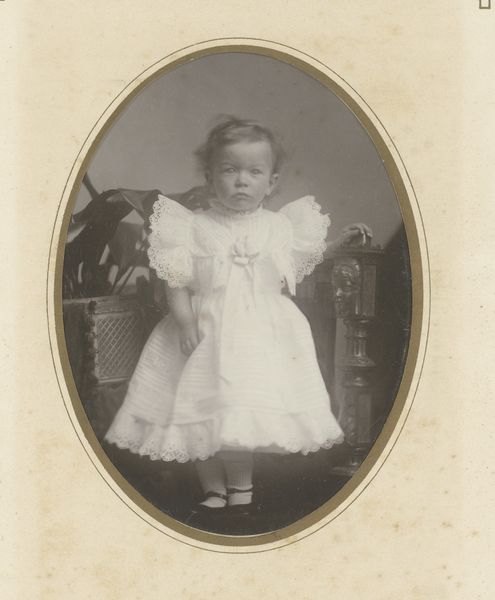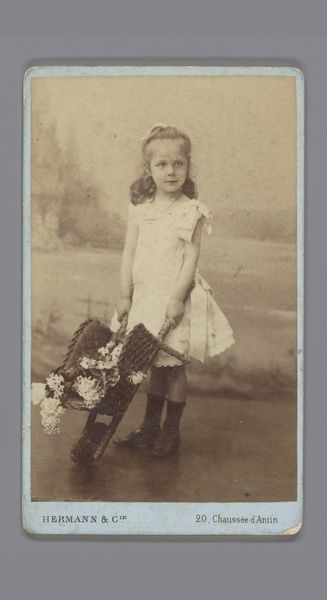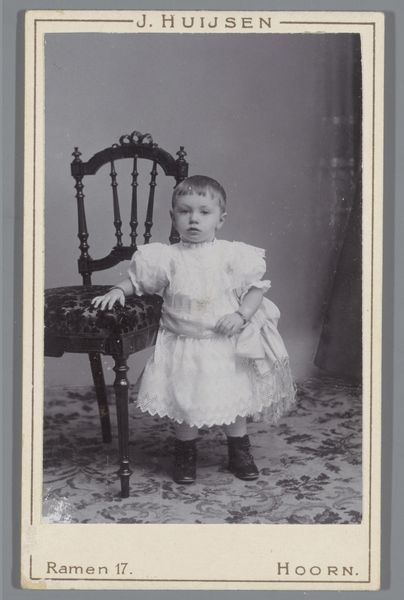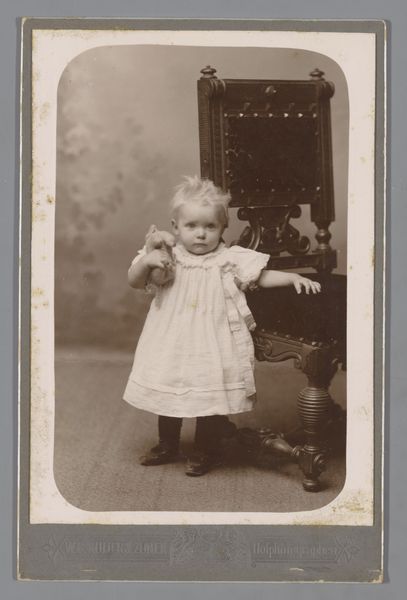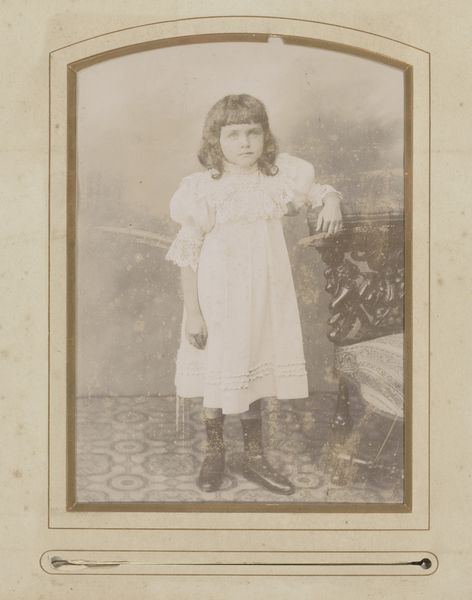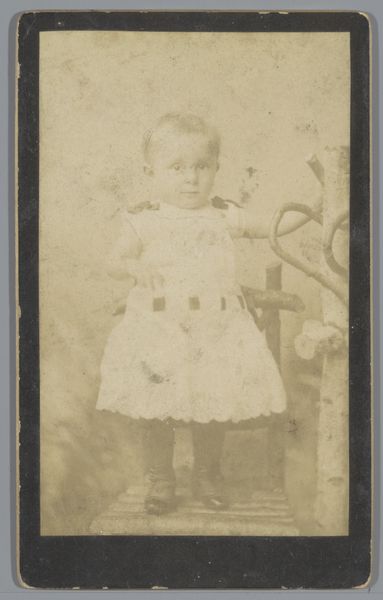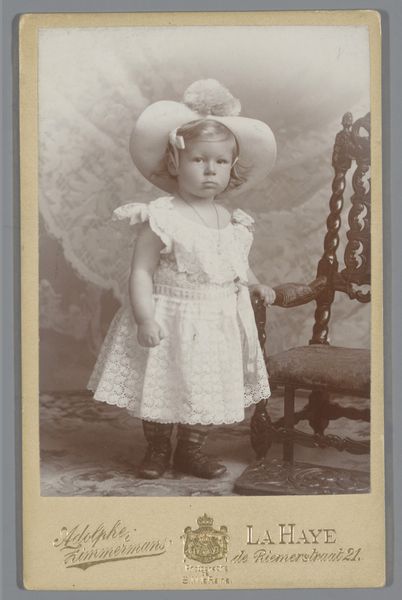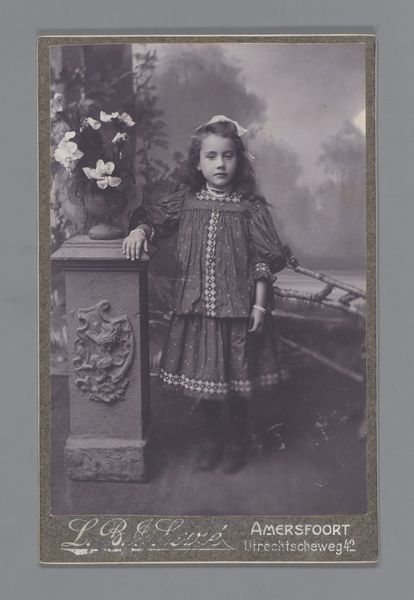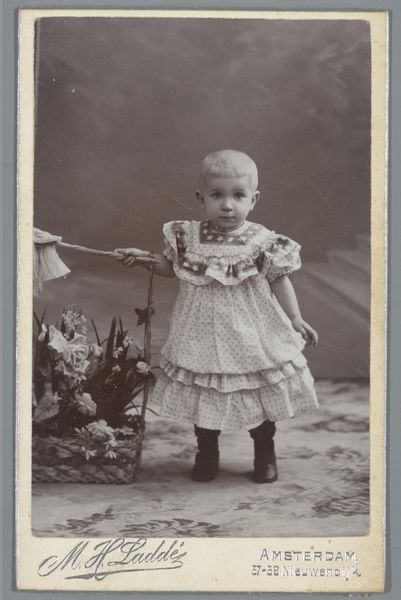
print, photography
#
portrait
#
pictorialism
# print
#
traditional media
#
photography
Dimensions: height 103 mm, width 64 mm
Copyright: Rijks Museum: Open Domain
Curator: Before us, we have an interesting example of pictorialism, a photograph entitled "Portret van een onbekend meisje met een bloemenmand," which translates to "Portrait of an Unknown Girl with a Flower Basket," attributed to W.G. Kuijer & Zonen and likely created between 1884 and 1906. Editor: It’s rather charming, isn't it? The sepia tones give it an antiquated, almost dreamlike quality. The little girl's direct gaze combined with the soft focus makes her feel so present, yet distant. Curator: Pictorialism, with its focus on aesthetic effect over strict representation, involved substantial intervention in the photographic process. Note the careful composition—the girl, the flowers, the arrangement of the light… It suggests that photography could be a form of artistic expression that reflected hand craftsmanship. This particular example blurs photography and fine art. The materials themselves, printing techniques of the late 19th century, and the labor needed to produce it, speak volumes about artistic practice during that period. Editor: Absolutely. The contrast is interesting. The almost hyper-realism of the flowers compared to the fading around the child’s lower body gives an ethereality. Note too how the photographer uses compositional techniques to create balance between light and shadow which guide the viewer’s eye. The tonal subtleties make a world of difference. Curator: It leads us to think about the social contexts surrounding studio portraiture during this era and invites a consideration of photography as a commodity. Who was this girl? Why was this image created? The backdrop, the flower basket, everything served a purpose, dictated by the photographer, yes, but influenced by social and economic conditions of late nineteenth century Amsterdam. Editor: Perhaps this sense of nostalgia we feel stems from our understanding of photographic processes and printing methods during this specific timeframe, combined with elements of sentimentality depicted so skillfully within a relatively confined space? Curator: Precisely. Understanding those limitations brings so much meaning to the image. We are dealing with material limitations but simultaneously social limitations—what was accepted in that era and what wasn’t. Editor: Yes. And so much is revealed in these choices regarding art’s meaning and power, when approached thoughtfully and aesthetically, even after the passage of so many years.
Comments
No comments
Be the first to comment and join the conversation on the ultimate creative platform.
